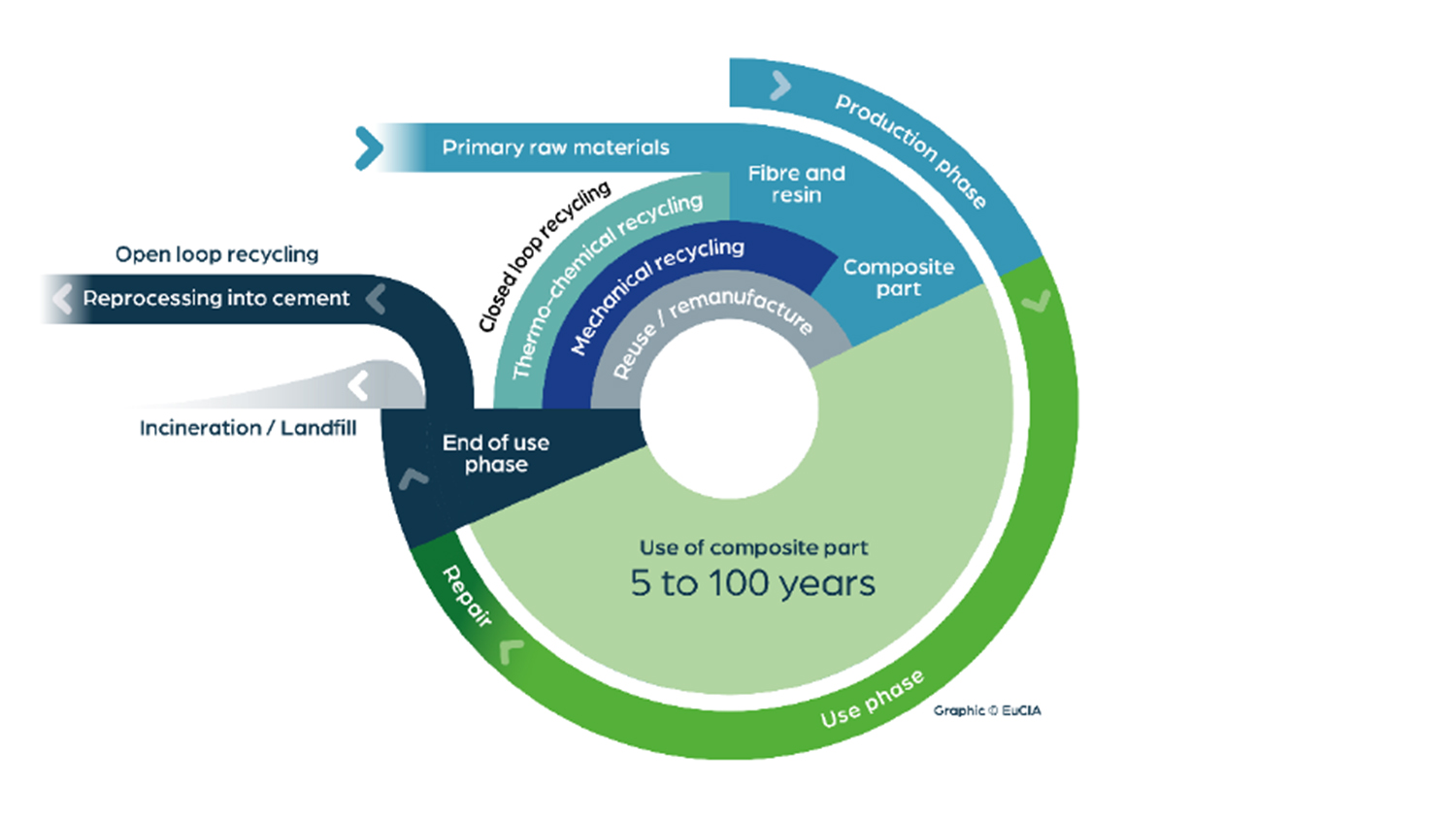Composites are sustainable materials and essential for realising the European Green Deal’s net-zero targets. Using the latest information and examples, the European Composites Industry Association (EuCIA) can now also demonstrate that composites are truly circular materials. Over the coming months EuCIA will share its knowledge on composites circularity through a series of publications on its new online Knowledge Hub. The first document, Why composites are genuinely circular, is available now.
A sustainable future
The contribution of composites to building Europe’s sustainable future rests on two pillars:
- Composites are strong enablers of decarbonisation, and essential for achieving net-zero emissions;
- Composites are circular materials, offering significant value to the circular economy.
Composite components provide more sustainable products than alternative materials by offering high performance, long-lasting solutions leading to lower maintenance and reduced energy use. Composites play an essential role in key markets, from lightweight structures for cars and aircraft, to wind turbine rotor blades, pipes for corrosive environments, PCBs for electronic equipment, and numerous construction and infrastructure applications. Without composites, our renewable energy targets will not be realised, and cars would be heavier and less fuel efficient.
Composites also fit extremely well into the circular economy model, where the objective is to keep products in use for as long as possible and reduce waste. Composites offer a long use phase, during which they make a substantial contribution to decarbonisation. There are also many options for extending the lifetime of composite components, including repair, reuse, and remanufacturing. When these options are finally exhausted, recycling is possible through both closed loop and open loop processes.
Reprocessing into cement and mechanical recycling processes are available today, but they need further scale up and proliferation throughout Europe. New thermochemical processes for closed loop recycling are in development.
Taking composites circularity to the next level
To maximise the value of composites to the circular economy, the supply chain to enable the sustainable management of end-of-use/end-of-life composites now needs to be developed. In its
new series of publications, EuCIA will provide an understanding of the current barriers to the implementation of a circular value chain and how to overcome them, as well as a review of the different recycling solutions for composite materials (existing technologies, and those under development).
A vision for building the circular value chain will also be presented. This emphasises the need for cross-sector cooperation. EuCIA is developing guidelines for founding a cross-sector alliance and actively engaging with key stakeholders to promote this initiative.
